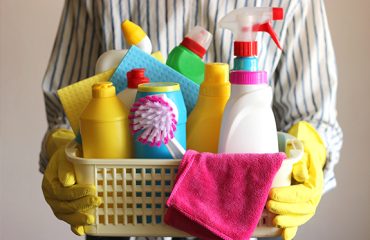
Why is training in the use of diisocyanates so important?
Diisocyanates are chemical compounds used in a wide range of industrial and commercial processes, such as the production of foams, paints, coatings, adhesives and sealants. Despite their wide application, diisocyanates pose a significant health hazard if not handled correctly. Therefore, training in the use and handling of diisocyanates is essential to ensure health, safety and compliance with applicable regulations.
Diisocyanates are known to cause serious health problems, including:
– Respiratory problems: Exposure can lead to asthma, shortness of breath and other respiratory diseases.
– Skin problems: Contact with skin may cause irritation and allergic reactions.
– Long-term effects: Repeated exposure may lead to chronic disorders, including irreversible respiratory diseases.
To protect workers, the EU has introduced stricter requirements for use and training through the REACH regulation (Registration, Evaluation, Authorization and Restriction of Chemicals). From August 24, 2023, everyone who handles diisocyanates must have completed mandatory training. This requirement also applies to Norway.
Benefits of training in the safe use of diisocyanates:
– Reduced health hazards: Training provides workers with the knowledge of proper use and safe handling to minimize the risk of exposure.
– Improved working environment: Proper training contributes to a safer work environment and reduces the risk of work-related injuries.
– Regulatory compliance: Employers who ensure that employees are properly trained avoid fines and legal consequences..
We’ve compiled a list of the most relevant questions and answers our customers have about the use of dissocynates:
1. What are diisocyanates?
Diisocyanates are chemicals that are mainly used as curing agents in polyurethane-based materials. They are found in products such as foams, paints and adhesives.
2. Why are diisocyanates regulated?
They are regulated because they can pose serious health hazards, especially to the respiratory system and skin. The regulations are intended to protect workers and promote safe use.
3. Who must be trained in the use of diisocyanates?
Anyone who handles products containing diisocyanates in the workplace, including operators, maintenance personnel and supervisory staff.
4. What does the training include?
The training covers:
– Identification of risks when using diisocyanates.
– Safe handling, including the use of protective equipment.
– Proper storage and disposal of the chemicals.
– First aid in case of exposure.
5. I am an employer – do I need to take the course?
The requirement applies to employers, employees and the self-employed.
6. What responsibility do I have as an employer?
The employer is responsible for arranging the necessary training (including themselves, also self-employed), and that all employees who use diisocyanates and diisocyanate-containing mixtures have documented training.
7. What happens if companies don’t meet the requirements?
Lack of training can lead to legal consequences, including fines and work stoppages. In addition, the risk of work-related injuries increases.
8. How can you reduce exposure to diisocyanates?
– Use personal protective equipment such as gloves and respiratory protection.
– Ensure good ventilation in the workplace.
– Follow procedures for proper storage and use.
Training in the use of diisocyanates is not only a legal necessity, but also an investment in health, safety and business sustainability. Through proper training, employees and employers can work together to ensure a safer working environment, reduce the risk of ill health and comply with applicable requirements.





